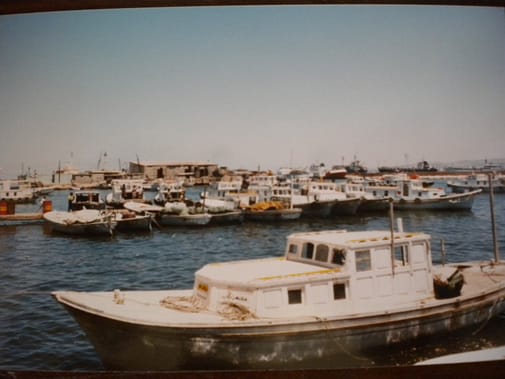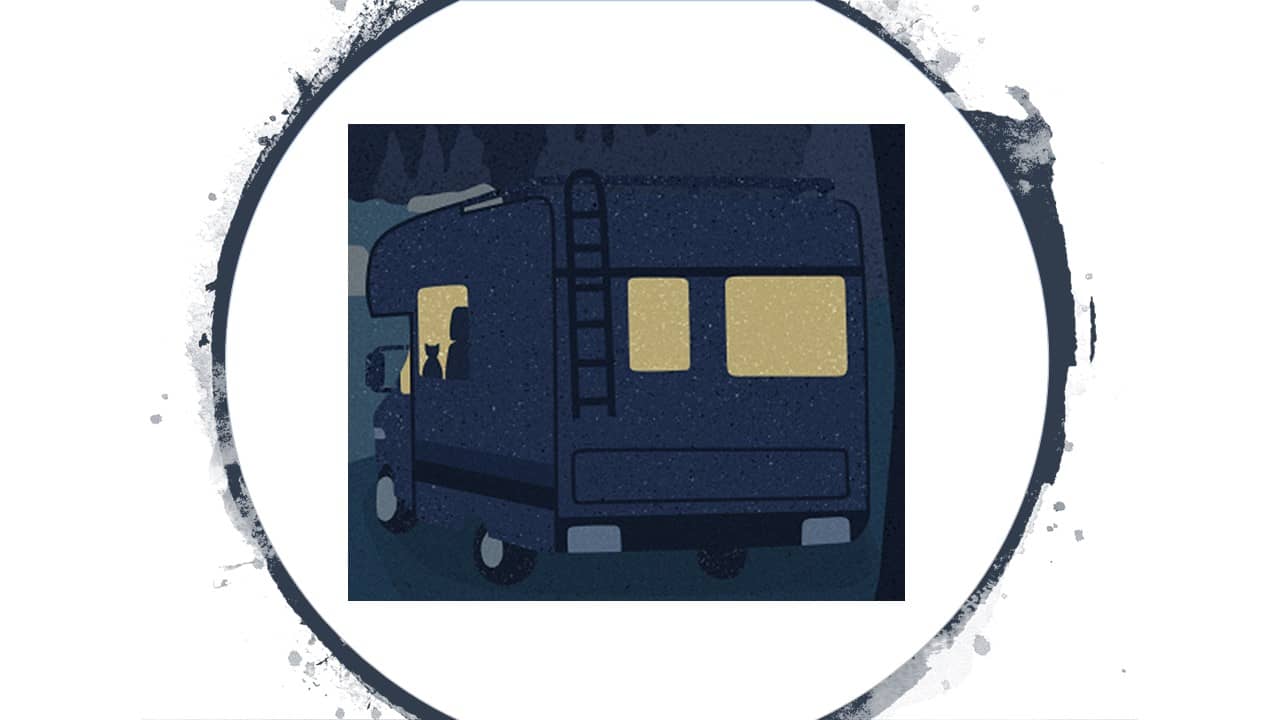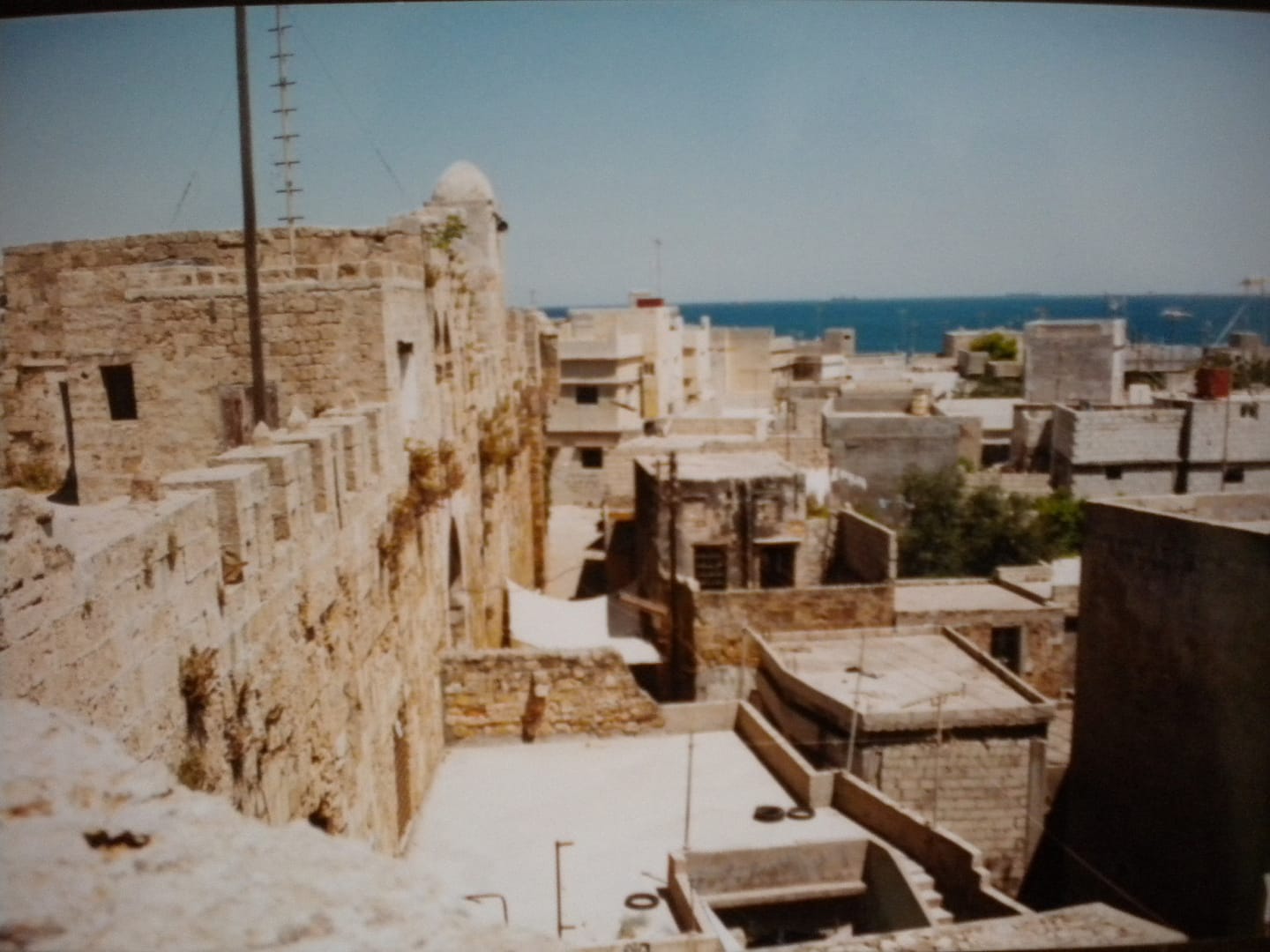It’s time for tea at the Ahmeds’.
All is quiet in the Tell Ahmar excavation compound; the others are sleeping or reading. It is three in the afternoon and the dust-filled heat of the day envelops me. The air is heavy and dry, oppressing everything, even sound. For a moment I don’t hear the generators hammering nor the donkeys braying in their rather desparate way. I hesitate in the heat, tempted to retreat to the cooler darkness of my mud-brick room.
At least the Ahmeds don’t live far, just a few minutes away, slightly further up the tell, where people have lived for millennia, creating an artificial hill. Their compound is well-cared for, swept daily. Coloured flowers add brightness to the otherwise drab mud-coloured buildings.
The door is open and I tap gently, peering inside. Yusef and his brother Ismael are sleeping on the floor. I hover uncertainly and am just about the sneak away when Ismael shifts and opens his eyes.
‘Er…’ I begin.
Ismael scrambles to his feet, shaking Yusef awake and calling his sisters.
‘Sorry...’ I try again. ‘I thought Yusef said I should come for tea. I’ll come another time’.
‘No, no, Vicki. Tfaddali, come in. Mona! Vicki hown! Chai!’
I step into the cool interior of the Ahmed’s reception room. The mud brick walls are plastered and the lower half painted in cool mint green. Leaving my shoes at the door I walk gratefully over the plastic woven mat and sink down on the strip of carpet which lines the walls, leaning on the hard cylindrical cushions in green, red and gold.
Ismael and Yusef are washing their faces. The twenty litre plastic container with a tap is filled each day from the stream which runs past the mosque. The water is cold and clean, from deep underground. Touch wood, I have not yet been ill from drinking tea in the village.
‘Keef halik, Vicki? How are you?’ Yusef turns to me, water pouring off his face.
‘Al hamdu l’illah, well thank you’, I reply. ‘And you?’
‘We are all well, and even better for having you in our home, welcome! Ahlan wa sahlan!’
‘Sorry to wake you up’.
‘No problem’.
I smile at the phrase.
Mona comes in holding a kettle and tiny glasses. She is followed by Dina and Fatima with plates of biscuits and tiny, hard green fruits and a dish of salt. The refreshments are set down on the floor and the girls leave.
‘Oh stay!’ I call out, glancing at the boys.
They nod and gesture for the sisters to come and sit down with them. Amina and Hoda, the littlest ones come tumbling in, followed by Mahmoud, the third brother.
‘What beautiful sisters you have, Yusef!’
‘Yes, they are our five stars!’ The girls giggle. We smile and nod at each other. They whisper behind their hands; their eyes never leaving my face.
I glance around the room. Niches in the walls contain a small pile of books or some clothes. Windows are few and small and square. Black and white photos of solemn young men, a calendar and a poster showing an Alpine scene adorn the walls.
‘Ehhhh!’
An older woman with a cheerful face enters the room emitting a torrent of Arabic.
Clumsily I leap to my feet and clasp her hand. Halima Ahmed shakes it vigorously, then she pulls me into a bear hug and kisses me firmly on both cheeks. She waves for me to sit down again, the stream of words and warm smile filling the room. The little girls crawl contentedly onto their mother. Fresh tea is poured. Then I utter the fateful words.
‘Who made the embroidery?’
With Yusef as translator, Halima explains that she made the embroidery when she was very young, a new bride pregnant with her first child, Dina. Before I realize, it is taken down and pushed into my hands.
The white cotton is cool and smells musty. The words ‘In the name of Allah, the Most Gracious, the Most Merciful’ is embroidered in tiny grey stitches. I hold it before me. It is a wreath of flowers, with another floral design at the centre. The flowers are odd, crablike, with robotic stems. The colours are even more peculiar; fluorescent orange and blue with dull greys and greens.
I tell her how lovely it is and hold it up so that they can replace it on the wall. Halima insists I take it. I protest but Halima refuses to take it back.
Before my third season at Tell Ahmar I consulted a Muslim friend. Could the cross-stitch be returned? I treasured it, but felt that its rightful place was on the wall of the Ahmed family reception room.
He advised me against trying to return it. It was given to me because Halima wanted me to have it. It would appear a rejection of her gift to attempt to return it. I took a photo of the embroidery instead and took that with me. Halima was delighted and laughed when she saw the photo. As my friend had predicted, she insisted that the cross-stitch was mine.












